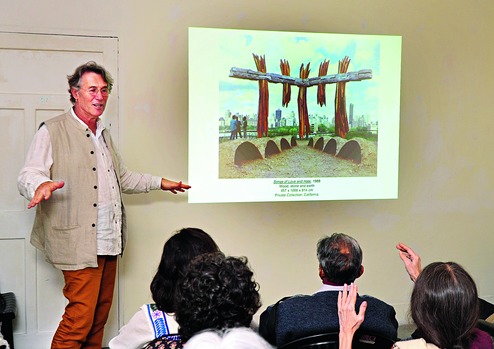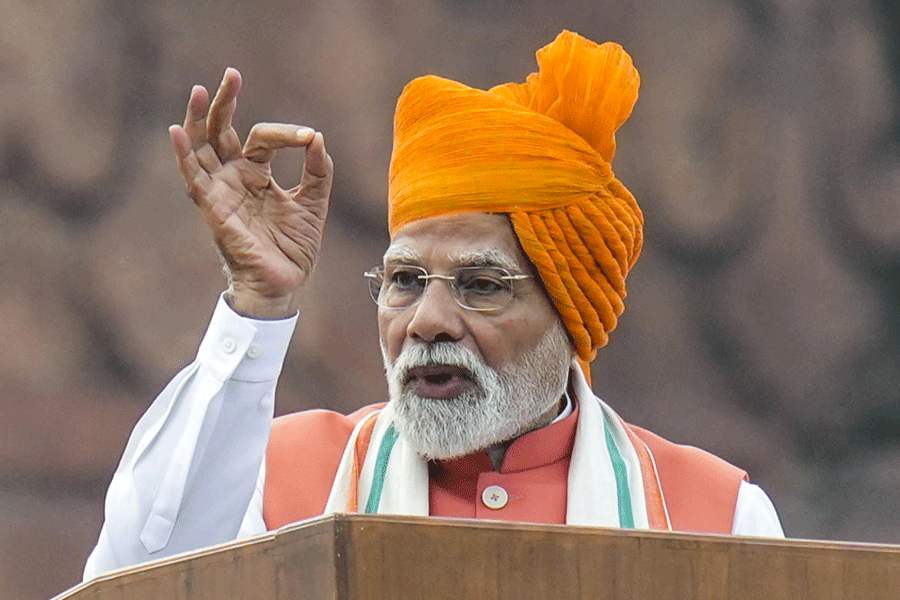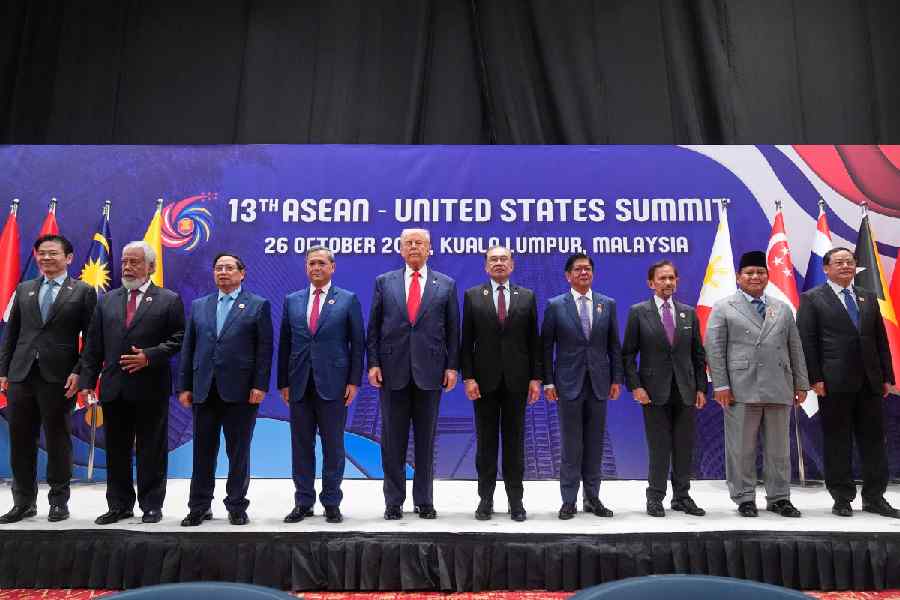
Calcutta: He first came to the city more than two decades ago to look for manhole covers. On Saturday, he was back again to speak about his work and the city's influences on it.
Sculptor Ilan Averbuch shared his memories of Camac Street and Howrah factories in a presentation titled Meaning as Metaphors at Studio21 on Saturday.
Averbuch's tryst with Calcutta began when he spotted some manhole covers in New York. "They were made of cast iron and I wanted to work with the material. All I knew is that the covers were from India," he said. After some enquiry, Averbuch found out that the covers were made in factories in Howrah and the artist decided to pack his bags.
That was in 1996. "I stayed in Camac Street and travelled every day to Howrah to work with cast iron," said the artist. "It was interesting to watch factory workers read newspapers at lunchtime. I had never seen workers read newspapers in factories in New York."
As Averbuch showed the audience pictures of men working in a factory, he told them how he found order in all the noise and chaos. "They worked methodically and had an organised way of functioning."
Hooghly inspired him to create a cast iron and stone artwork, River, in 1996. The installation is part of Harsh Neotia's collection. A second artwork inspired by the river is kept at the Open Museum in Tefen, Israel.
A tribute to factory workers who worked with bare hands came in the form of Hands - made of cast iron, stone and water - that has travelled from India to New York before finding a place at the Gal-On Gallery in Israel. Jerusalem (1998), also inspired by factory employees, is part of a private collection in New York.
Another special memory is of spending time with author Amitav Ghosh, who was then writing The Calcutta Chromosome. "I loved reading the book. It was exciting to be able to relate to the roads the author had mentioned."
"The city has changed so much in two decades," said Averbuch. App cabs, traffic and global influence have made it a "more convenient place" but he still misses the old world charm of 20 years ago.










